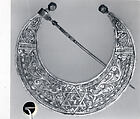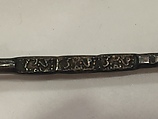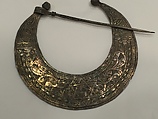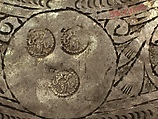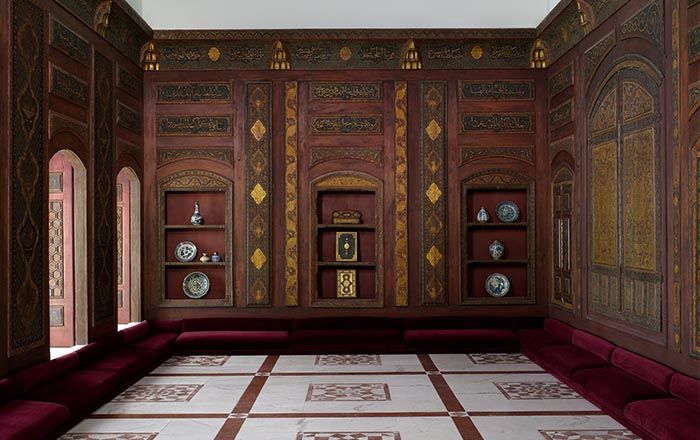Fibula
Not on view
Once part of a pair, this crescent- shaped (hilal) fibula would have been used by a woman to pin a draped garment at the shoulder. Fibulae of this type are known as khlal aftah, and are well-known from the region of Médenine in South-Eastern Tunisia. Such jewels were worn as part of an entire suite of ornaments including necklaces, head, ear and temple adornments, bracelets, and others.
Motifs incised on the surface include birds, fish, flowering vines, and the six-pointed star known as the Seal of Solomon. Many of these forms have been found in the arts of the region of Tunisia since the Punic period, and are believed to be auspicious.
The verso of the fibula is also ornamented, and includes three Arabic stamps bearing the name of the maker, which reads "Moshe Mazuz." Jewish craftsmen were well known to be the among the best jewelers in Tunisia and other parts of North Africa, and created objects for a wide variety of clientele.
This image cannot be enlarged, viewed at full screen, or downloaded.
This artwork is meant to be viewed from right to left. Scroll left to view more.


